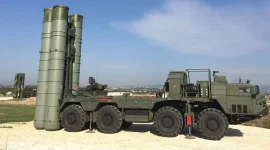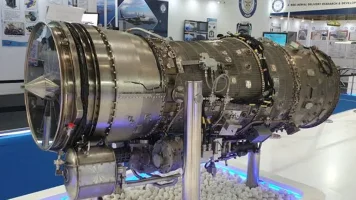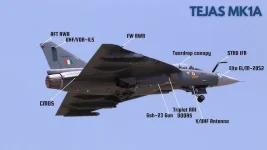- Views: 2K
- Replies: 15
Despite the Indian Navy initiating aircraft carrier operations in 1961—more than half a century before China’s People’s Liberation Army Navy (PLAN)—the significant advantage of decades of operational experience has been effectively nullified.
This shift in maritime power dynamics became undeniably clear last week when the PLAN commissioned its third aircraft carrier, the Fujian.
While China inducted the 80,000-tonne vessel, equipped with a sophisticated, locally developed Electromagnetic Aircraft Launch System (EMALS), the Indian Navy’s plans for a comparable third carrier remain stuck in a cycle of committees, reviews, and administrative delays.
The contrast is stark: Beijing is churning out advanced warships, while New Delhi is accumulating files.
A History of Early Dominance Lost
Historically, the Indian Navy displayed remarkable foresight. It began carrier operations 64 years ago with the commissioning of INS Vikrant (formerly the British HMS Hercules) in 1961.Purchased for a mere Rs 7 crore, this vessel provided 36 years of invaluable service, allowing Indian sailors to master the complex art of carrier aviation. This era ended in 1997, a full 15 years before China commissioned its very first carrier, the Liaoning, in 2012.
India maintained this continuity with INS Viraat (formerly HMS Hermes), commissioned in 1987. For 30 years, Viraat served as the cornerstone of Indian naval power, hosting Sea Harrier jets and refining doctrines that no other regional navy possessed.
However, that historical lead has evaporated. China is now launching a new carrier approximately every four years. Following the Liaoning, they rapidly commissioned the domestically built Shandong in 2019, and now the advanced Fujian.
Naval analysts project that by the early 2030s, the PLAN will possess a fleet of five to six carriers, potentially including nuclear-powered variants with global reach.
The "Paper Carrier": INS Vishal
In contrast to China’s rapid construction, India’s second indigenous aircraft carrier (IAC-2), tentatively named INS Vishal, remains on the drawing board. Although the Ministry of Defence allocated Rs 30 crore in 2015 for initial design work, actual progress has been minimal.Current reports suggest the Navy hopes for government approval for the 65,000-tonne CATOBAR (Catapult Assisted Take-Off But Arrested Recovery) vessel in 2026. However, as of November 2025, there is no confirmed timeline for construction.
Even if approved, this new ship would likely enter service around 2035—just in time to replace the INS Vikramaditya, which is currently undergoing upgrades to extend its life. As one senior officer noted anonymously, the third carrier would not be a "force multiplier" but merely a "substitute" to maintain current numbers.
Operational Gaps and Fighter Jet Delays
The disparity is not limited to hulls; it extends to air power. The indigenously built INS Vikrant (IAC-1) was commissioned in September 2022, six years behind schedule and, controversially, without a dedicated fighter air group.Former Navy Chief Admiral Arun Prakash criticised the "disjointed decision-making process," noting that fighter selection should have occurred years prior to the ship’s completion.
This critical gap was only addressed on paper in April 2025, when India signed a Rs 63,000-crore deal with France for 26 Dassault Rafale-M marine fighters. However, deliveries are not expected to commence until mid-2028, leaving a significant operational void.
Strategic Debates: Missiles vs. Carriers
The delay in the third carrier is also driven by intense debates regarding military spending. The Indian Navy is grappling with a shortage of submarines—operating only 17 against a requirement of 24.Many senior officers argue that in an era of budget constraints, funds should be prioritised for "sea denial" assets like submarines rather than vulnerable, expensive carrier battle groups.
This argument is bolstered by the rising threat of Anti-Access/Area Denial (A2/AD) strategies employed by China and Pakistan. These nations have deployed long-range missiles, drones, and cyber weapons designed to create a "secure bubble" that hostile carriers would struggle to penetrate.
Even the US Navy views China’s A2/AD capabilities as a serious threat to its supercarriers.
The Air Force Perspective
The Indian Air Force (IAF) also opposes the massive expenditure required for a third carrier. IAF planners argue that land-based fighters can project power more economically and securely.They point to the Su-30MKI fleet, stationed at Thanjavur and armed with BrahMos-A supersonic cruise missiles, as a prime example. These aircraft can cover the Indian Ocean Region with pinpoint accuracy without the vulnerabilities associated with a large surface ship.
China’s Technological Leap
Meanwhile, the Fujian represents a generational leap in technology. Unlike India’s current carriers, which use older Soviet-style ski-jump ramps, the Fujian utilises electromagnetic catapults similar to the latest American ships. This allows it to launch heavier aircraft with greater fuel and weapon loads, as well as support aircraft like the KJ-600 airborne early warning planes.The Fujian will carry next-generation aircraft, including the stealth J-35 and the upgraded J-15T. For Beijing, this fleet is not just for defence; it is a tool to secure maritime trade routes under the Belt and Road Initiative and to project power far beyond its coastal waters.
As India reduces its target fleet from 200 to 175 ships due to fiscal pressures, the gap between the two Asian giants continues to widen, raising serious questions about the future balance of power in the Indo-Pacific.






